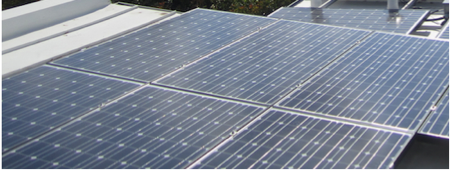New initiative to help low-income New Yorkers go solar
 After an earlier setback, New York’s ambitious REV (Renewing the Energy Vision) energy strategy is moving forward to help expand solar to low- and moderate-income (LMI) families. The state’s Energy Research and Development Authority (NYSERDA) is launching a new program, the NY-Sun Affordable Solar Predevelopment and Technical Assistance initiative. The goal is to help low and moderate income renters benefit from solar.
After an earlier setback, New York’s ambitious REV (Renewing the Energy Vision) energy strategy is moving forward to help expand solar to low- and moderate-income (LMI) families. The state’s Energy Research and Development Authority (NYSERDA) is launching a new program, the NY-Sun Affordable Solar Predevelopment and Technical Assistance initiative. The goal is to help low and moderate income renters benefit from solar.
Richard Kauffman, New York State Chairman of Energy and Finance, said “enabling community solar” will be one of the program’s aims. LMI households are defined as those that earn less that 80 percent of the median income, totaling about 40 percent of New York State households.
For Peter Mandelstam, New York Tri-State Executive Director at the nonprofit GRID Alternatives, the fact that the funds are going to organizations rather than individuals is “the key distinction” from past programs aimed at LMI households. Referring to his previous career working for the Department of Housing Preservation and Development (HPD) in New York City, Mandelstam said, “What I learned from HPD is that large-scale federal government isn’t effective, but when you find a mission-aligned nonprofit, they can do the sophisticated financial transactions and navigate government regulations, working with their tenants to cost effectively do solar.”
Melanie Santiago-Mosier, Program Director, Low-Income Solar Access, at the Baltimore office of Vote Solar, which supports clean energy policies and programs throughout the country, agrees that the main difference from previous REV programs is the current program’s emphasis on organizations.
“Typically, incentives are awarded for solar projects once the customer has signed on the dotted line,” Santiago-Mosier said. “The new Affordable Solar Predevelopment and Technical Assistance program was developed in recognition that some assistance is required for community solar projects and affordable housing solar projects designed to serve low- and moderate-income customers before the customer signs.”
She says these kinds of projects can be hard to develop. Engaging community organizations early on in the process will allow them to provide assistance such as financing and finding project participants.
NYSERDA is parceling out grants in no more than $200,000 increments. “We see this as seed funding,” Mandelstam said. “We consider this a model or pilot for future programs.”
In New York, he pointed out, regulators approved a new system benefits charge to promote renewable energy. However, LMI customers, burdened with this new charge, have yet to see any benefits. Governor Cuomo, he said, was completely committed to making sure LMI households receive benefits for the charges they pay on their bills. Mandelstam also cited an interesting statistic, derived from a Greentech Media article: the second fiscal quarter of 2016 recorded about 10,000 solar projects completed, but of these only six were for LMI households.
“The private sector,” Mandelstam said, “is not doing solar for poor people, so someone has to fill that gap.”
“NYSERDA tried to target funding to specific types of predevelopment activities where organizations have experienced difficulties that are unique to this customer segment,” Santiago-Mosier said. “There has been positive feedback that the program could be helpful with activities such as securing financing, engaging in education for multifamily housing owners and community outreach. We also have heard that funding is needed for other activities that are not covered by this program, such as early interconnection study fees and the costs to secure site control. We believe this is an important first step for NYSERDA to take, but agree that more needs to be done to really expand access to solar in low- and moderate-income communities.”
The announcement for this program indicated that the assistance it could provide to organizations may not be in the form of direct funding per se, but in staff and solar marketing expertise. Santiago-Mosier also saw this non-cash benefit of the program as a positive. “Hiring or gaining the expertise to do project development or financial design can take a long time and a substantial commitment of resources, so in some cases it may make more sense for NYSERDA to provide that expertise directly.”
Mandelstam likes that the program encourages communities to evaluate their situations and come up with their own solutions, rather than impose solutions on them. “I’ve been doing solar and wind since 1991,” Mandelstam said. “What I’ve learned is you have to start with the people whom you are trying to serve.”
“The growth of solar provides a tremendous opportunity to address some of the greatest challenges faced by lower-income communities,” Santiago-Mosier said. “Solar can provide long-term financial relief to families struggling with high and unpredictable energy costs, living-wage employment opportunities in an industry adding jobs at a rate of 20 percent per year, and a source of clean, local energy sited in communities that have been disproportionately impacted by traditional power generation.”
Applications will continue through August 31, 2018, or until funds are exhausted. To apply, visit NYSERDA’s program solicitation page.
